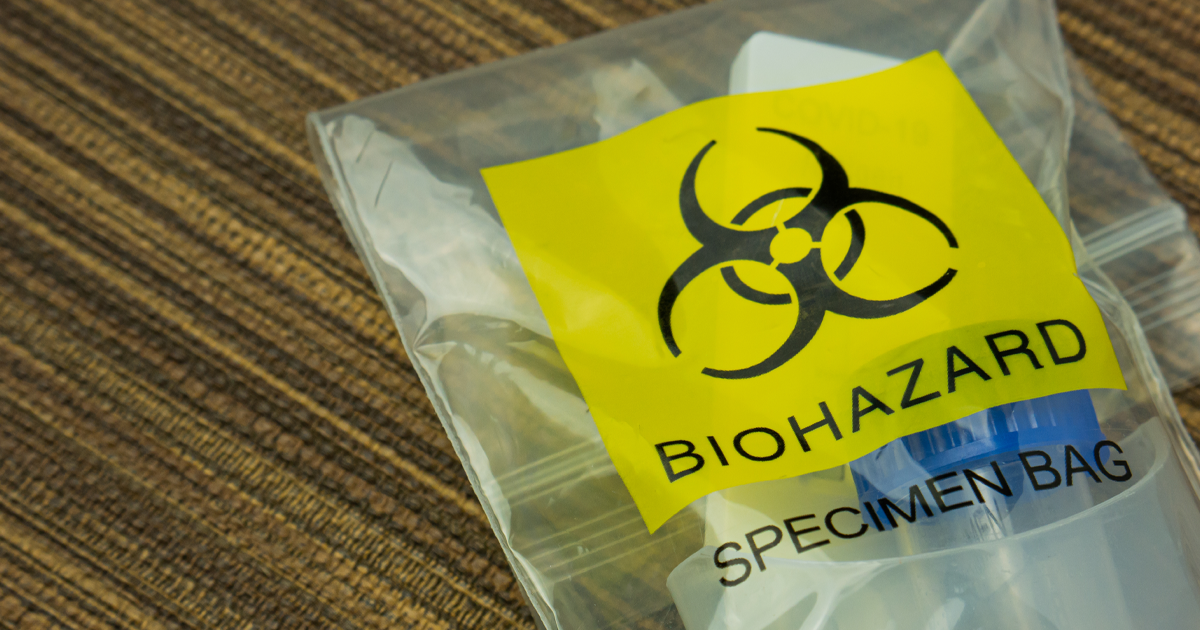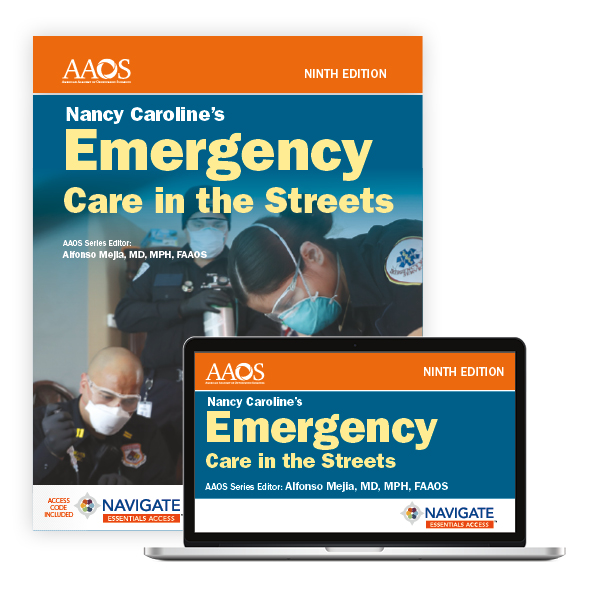Are You Prepared for Disease Outbreaks in Your Community?

A Pre-Pandemic Call
An elderly woman living in a small trailer called EMS at 1:00 am because her 22-year-old grandson, Billy, was acting strangely. He had been staying with her while searching for an apartment and worked for a lawn service applying fertilizers. She found him sitting on the floor, unresponsive, with the TV blaring. She knew little about his medical or drug history but confirmed he wasn't diabetic.
Our medic unit and fire department crew arrived and attempted to communicate with Billy, who was unresponsive. When we checked his vitals, he began screaming and flailing. Noticing he was hot to the touch, we considered his altered mental state, potential fever, and unknown drug use. We donned masks and eye shields for safety. After wrestling with Billy, we transported him to the ED, where tests revealed he had meningococcal disease. Sadly, Billy died the next day from bacterial meningitis, and our crew had to take preventive medication due to exposure.
This incident reminded us of the importance of PPE, especially when dealing with unexplained fevers. Always remember: if it's wet and not yours, don't touch it without PPE.
A Look at Current U.S. Disease Outbreaks
In recent months, the United States has seen a rise in outbreaks of several diseases, including Salmonella, Listeria, Dengue, and Measles. These diseases pose significant health risks and have led to increased vigilance and preventive measures across the country. Understanding the symptoms, transmission methods, and preventive strategies for each of these diseases is crucial for safeguarding public health and ensuring timely medical intervention. Here is a general review of information about these four outbreak diseases:
Salmonella
Salmonella is a leading cause of foodborne illness, hospitalizations, and deaths in the U.S. and worldwide. The bacteria contaminate food. Most people infected experience diarrhea, fever, and stomach cramps. The symptoms usually start 6 hours to 6 days after swallowing the bacteria. Most people recover without treatment after 4 to 7 days. Some people may require medical treatment or hospitalization (ie: < 5 or > 65 years old and those with a weakened immune system). The CDC estimates there are approximately 1,280,000 people in the U.S. infected each year and 238 deaths from the infection.
Listeria
Listeria is the third leading cause of death from foodborne illness in the U.S. It is caused by bacteria that contaminate foods. Listeria bacteria can cause an infection called listeriosis and is most likely to harm pregnant women, newborns, older adults, and people with weakened immune systems. Other people infected are rarely seriously ill. There are two forms of the disease: invasive and intestinal. Listeria can also cause intestinal illness. Symptoms of intestinal illness usually start within 24 hours after eating food contaminated with Listeria and usually last 1–3 days. These can include diarrhea and vomiting. The symptoms are usually mild, however, some people with intestinal illness can develop invasive illness.
Invasive listeriosis occurs when the bacteria spreads beyond the intestines. Symptoms of invasive illness usually start within 2 weeks after eating contaminated food. They include fever, flu-like symptoms (muscle aches and fatigue), headache, stiff neck, confusion, loss of balance, and seizures. When not associated with pregnancy, almost 1 in 6 cases i fatal. Symptoms in pregnant women are usually mild and include fever and flu-like symptoms. Some pregnant women may never have symptoms. However, infection during pregnancy usually leads to miscarriage, stillbirth, premature delivery, or life-threatening infection of the newborn. The CDC estimates there are approximately 1,600 people in the U.S. infected each year and 260 deaths from the infection.
Dengue
Dengue is a disease caused by one of the four variations (DENV-1, -2, -3, -4) and is spread by a bite from the Aedes species of infected mosquito. In 2024, there were more than 13 million cases of dengue reported in North Central and South America, and the Caribbean. That year there were outbreaks in Puerto Rico (6,291 cases and 13 deaths) as well as the U.S. Virgin Islands. There were also 3,483 traveler cases throughout the U.S. (primarily CA, FL, TX, AZ, and HI). An infected person who travels back to the U.S. who is bitten by a mosquito while in the U.S. can potentially pass the virus to the next person who is bitten. Thus far in the first half of 2025, it is looking worse than last year with 2,096 cases in 39 jurisdictions of the U.S. High-risk patients include: infants, > 65 years old, and pregnant women. Symptoms include: a fever and two of the following: aches and pain (headache, pain behind the eyes, or muscle, joint or bone pain), nausea and/or vomiting, rash, and any of the warning signs. Also important is travel history to an endemic area (in the last 14 days). Most patients recover within a week, but 1 in 20 develop “severe dengue,” which can result in shock, internal bleeding, respiratory distress from plasma leakage, and death. The warning signs of higher risk for severe dengue develop within 24-48 hours of fever subsiding and include:
Abdominal pain or tenderness
Persistent vomiting
Bleeding from the nose or gums
Vomiting blood or blood in the stool
Extreme exhaustion restlessness
Measles
Measles is the most highly contagious febrile rash illness, infecting up to 90% of susceptible close contacts. Outbreaks have been a topic of national concern this year because the U.S. previously declared “measles eliminated” in 2000, with the advent of the MMR vaccine. Recently, there has been a significant increase in cases. The virus is spread through the air when a sick person coughs or sneezes. In fact, the virus can stay in the air for 2 hours after the person with measles leaves the space. According to the CDC, 9 out of 10 people who come near a person with measles and are not protected by vaccination will also become infected. The symptoms appear 7 to 14 days after contact with the virus. Symptoms include high fever, cough, runny nose, red and/or watery eyes, and a rash breaking out 3-5 days after initial symptoms. Patients usually can isolate for the two weeks at home provided they are kept away from others who are not sick and anyone who does not have the vaccination. Measles can develop into pneumonia and brain swelling (encephalitis) which can be lethal. Should they develop difficulty breathing, painful breathing or painful coughing, dehydration, fever or headache which does not go away, severe weakness, altered mental status, or difficulty feeding (young children), they may end up being taken to the ED in your ambulance. Your crew members should already be vaccinated, but everyone should still wear appropriate PPE. Call ahead to the ED so the patient is not exposed to other patients.
Information about bacteria and viruses that cause food poisoning and prevention strategies for storage and prep of food can be found at the CDC site as well as FoodSafety.gov.
The Emergency Responder’s Role in Managing Outbreaks
Our role on calls which may involve a communicable disease is to do the following:
Be situationally aware.
Be constantly vigilant.
Follow appropriate precautions.
Use the PPE provided.
Report suspected exposures to the appropriate person in your agency.
Appropriately document.
Disinfect to prepare for the next call and to not bring any “pathogens”. home to your family.
Before PPE was introduced, we didn't fully understand its importance. Now that it's widely available and continually updated, choosing not to use it is like inviting illness into your home. I remind myself that wearing all types of PPE—whether for infection control or rescue—is a way to honor those who suffered injuries or illnesses, leading to the development of the PPE we have today.
When taking a patient's history, inquire about recent travel which could provide clues to potential infectious diseases. Try to stay up to date on the latest diseases that pop up and may be showing up in your community. Preparedness doesn’t just happen at that annual review.
Lessons Learned from the COVID-19 Pandemic
Many emergency responders and healthcare providers have strong views about the COVID-19 pandemic. From the first documented case in the U.S. on January 22, 2020 to the official end of the federal public health emergency on May 11, 2023 there were many disruptions to the emergency services we had come to know for many years. In retrospect, there are certainly many things to learn from the pandemic. As some might say, “the only thing we learn from history is that we don’t learn from history.” As a guarded optimist, I sincerely hope there were plenty of after-action activities to prepare for the next major crisis.
Here are a few things I hope we have learned:
Expect supply chain issues for PPE. Plan ahead by stocking up, and rotate out old supply into the training division so it can be used in training exercises.
Take care of your personnel. It may get busier, and decontamination may take more time, but they still need breaks and meals. Plan for their time off due to sickness. Remember they can’t work double shifts every day. They need rest, they need to get away from the field, and they need to be with their families, or they will simply have compassion fatigue and burn out.
Maintain clear and consistent communication. During a crisis, information can change quickly, leading to confusion and stress. Establish regular briefings to keep everyone informed about new protocols, updates, and resources.
It may be a good time to do a review of the pandemic at your agency level. Consider conducting an after-action report or debriefing to discuss what worked and what didn't.
In Summary
A couple of comments for your consideration:
Stay up to date on foodborne outbreaks and food recalls.
Visit FoodSafety.gov for tips on preventing food poisoning.
Don’t forget to ask about recent travel history in patients with a rash and/or fever.
Make sure your quartermaster stays on top of the supply of PPE in your storage and rotate the expiring supplies out to be used in training.
Take some time and consider what your agency could learn from the COVID-19 pandemic to be better prepared for the next one.
Cultivate those relationships with local health departments. They will be calling on EMS again for sure.
As always, be careful out there!
References
CDC Outbreaks Site: https://www.cdc.gov/outbreaks/index.html
FoodSafety.gov
Centers for Disease Control and Prevention (CDC). Division of Viral Hepatitis 2025 Strategic Plan, CDC; 2020.
Classroom Resources
For current content, lessons, and case studies on disease outbreaks, see AMLS: Advanced Medical Life Support, Fourth Edition, and AHDR: All Hazards Disaster Response, Second Edition.
About the author:
Bob Elling, MPA, Paramedic (retired) – has been a career paramedic, educator, author, and EMS advocate for 5 decades. He was a paramedic with the Town of Colonie EMS Department, Albany Times Union Center, and Whiteface Mountain Medical Services. He was also an Albany Medical Center Clinical Instructor at the HVCC Paramedic Program. Bob served as AHA National/Regional Faculty and participated in many successful life-saving legislative campaigns with the You’re the Cure Network. He also served as paramedic and lieutenant for New York City EMS, a paramedic program director, and associate director of New York State EMS Bureau. He has authored hundreds of articles, videos, Blogs, and textbooks to prepare EMS providers for their career. Bob is the ECSI Medical Editor for the CPR and First Aid Series, Co-Author of EVOS-2, and Co-Lead Editor of Nancy Caroline’s Emergency Care in the Streets.
Nancy Caroline's Emergency Care in the Streets
Thoroughly reviewed by medical doctors and subject-matter experts, Nancy Caroline's Emergency Care in the Streets teaches students the technical skills required of today's paramedic while emphasizing other important professional attributes, including critical thinking, empathy, teamwork, communication, problem solving, and personal well-being.
Request More Information
